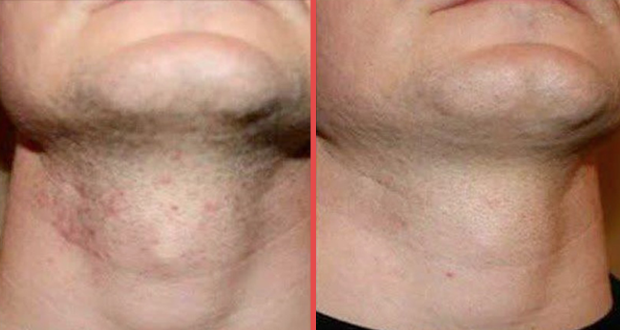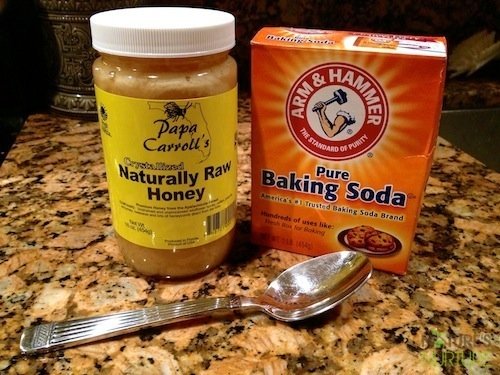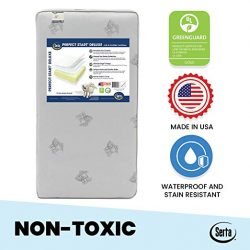Shaving is fairly simple once you get the hang of it. You lather up, remove hair and enjoy your fresh gleaming face the entire day. The only problem is that you can never really avoid nicks and bumps. Nicks heal pretty quickly; all you need to do is apply a little antiseptic cream to it. Shaving bumps are harder to deal with, however.
Why do we get Shaving Bumps?
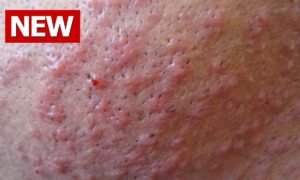
Shaving bumps, commonly referred to as razor burns, are common sights in most adults who shave. The commonest way they are identified is through redness or discoloration of skin, persistent itch or sensitivity in the region or just plain discomfort.
When the razor moves along the skin, it can sometimes force soft new hair backwards into the skin. This triggers the nerves in the area and you experience pain. The longer the hair remains inside, the longer it hurts. While most hair naturally grows out with time, if left stuck, the hair can cause an inflammation. The inflammation is often characterised by an unsightly discoloration and can even spurt into tiny boils.
How to Treat Shaving Bumps?
Treatment for Shaving Bumps is often not taken seriously. There are over the counter medicines that may be prescribed by websites. However, it is very important to have your shaving burn checked out by a professional dermatologist before popping a pill. A little discomfort usually abates in a few days. But if the Shaving Bump is too uncomfortable, it is time to see a doctor.
How to prevent Shaving Bumps?
Here are a few points to keep in mind to prevent Shaving Bumps.
1. Shaving Bumps are reported more often by people with curly hair than people with straight hair. If you are more prone to shaving bumps, the easiest way to avoid them is to let the beard grow. Trim it to a proper shape after it attains a proper length.
2. Don’t go over the same area over and over with the razor. It is not getting any significant amount of hair out, but it is surely irritating the skin and might even be exposing your skin to bacteria more than it needs to be.
3. Shave along the grain. Pull strokes in direction of the hair growth.
4. You can exfoliate and rest your skin to allow your pores to open more. Rubbing in the shaving cream properly can also help.
Aloe Vera
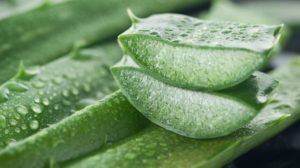
Aloe Vera is pretty easy to find. You can find gels in the market made from it at pretty competitive rates. The other option is to get a sapling and plant it in an old gravy boat. Aloe Vera is pretty low maintenance, and you can keep it next to your basin the bathroom. It thrives in occasional watering as well. To use, just pluck a leaf and tear it apart with your nails to reveal a soothing, cooling gel inside. Dab it on your face where you have the razor burn, and the itching should relieve momentarily. Do this immediately after a shave for best results. Let the gel dry out, and then wash it out with cold water. Your shaving bump should abate in a few applications.
Baking Soda
Baking Soda is amphoteric, which makes it ideal to restore the pH of your skin. Dissolve a tablespoon of baking soda into a cup of water. Use a small piece of cotton wool to soak the solution in and dab it generously over the area where you feel discomfort. Let it dry out on its own and let it stay for about 5 minutes. Rinse it off with some cold water. You can do this daily, several times each day. The razor burn should fade.
Honey
Honey is not just a delicious sweetener to add to your iced tea, but it also has several health benefits. Owing to its antibacterial properties, a lot of ancient cultures have used honey to protect wounds from infections. Plus, it is a great moisturiser. To heal your razor burn, tab a generous amount of honey to the burn. Let it dry on its own. You can rinse it off with cold water again.
Alum
Alum, unlike the previous remedies, can sting. But the sting is worth bearing. Alum prevents bleeding, and so it is especially useful to rub against your skin after a shave. It closes your pores and any nicks you might have made. This prevents infection, and ensures that the little nicks don’t snowball into a bigger problem later.
Lemon Juice

Citric acid being an astringent, and mildly acidic works wonders to eliminate germs. It can sting when applied to a cut though.
To use Lemon juice, simply squeeze out fresh cut lemons. Soak a cotton ball into it and dab the juice to your face wherever you feel irritated. Let it dry out, and in the process, it will kill several microbes which can possibly infect your skin. After a good 10 minutes, you can wash it off using tap water or lukewarm water.
Shaving bumps can trouble a lot of people, but there are plenty of remedies around the house you can employ. It is crucial to remember, however, that these remedies are only to be used to abate minor discomfort. If your discomfort is significant or unbearable, the best bet is to approach a doctor for their qualified professional opinion and give first priority to their medical advise and prescribed medicines.

